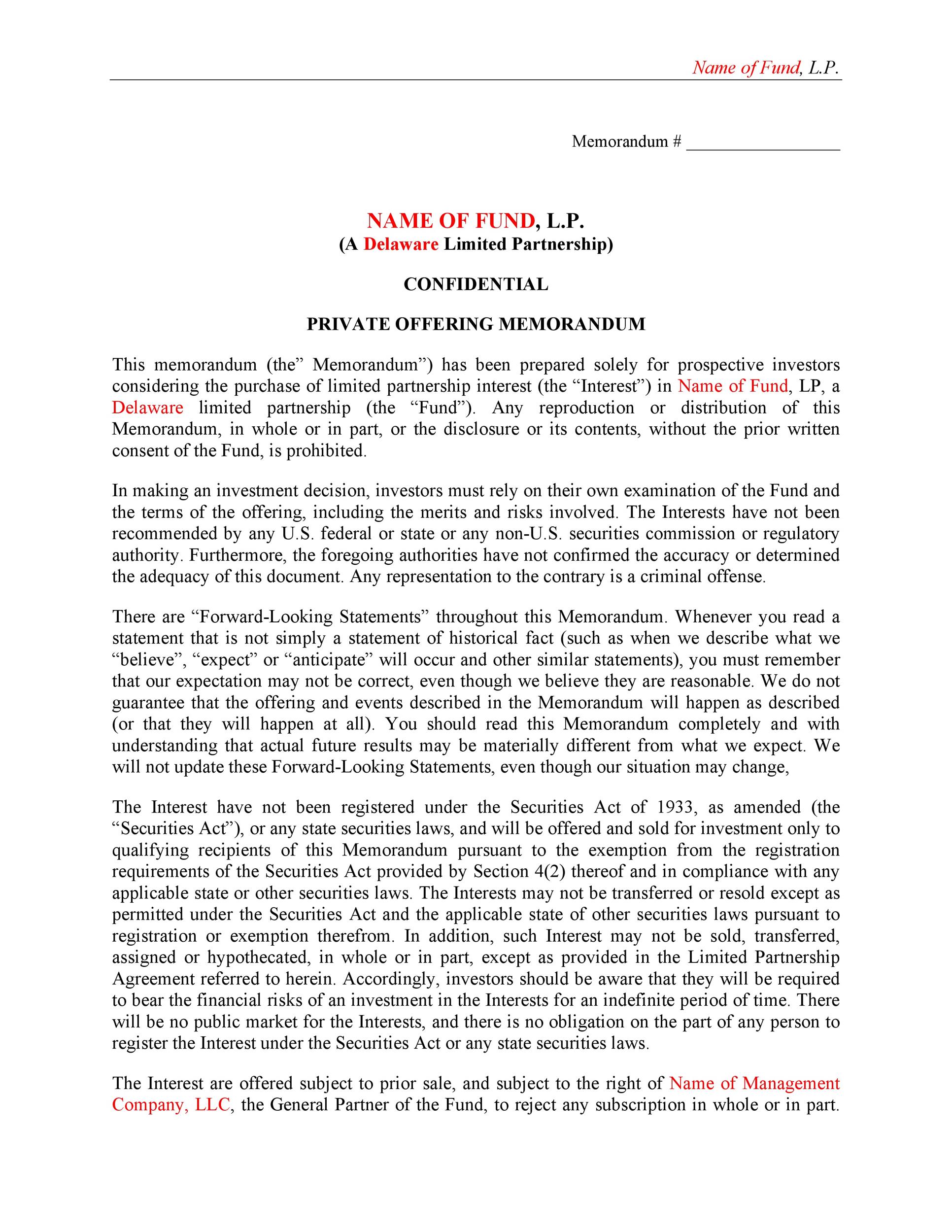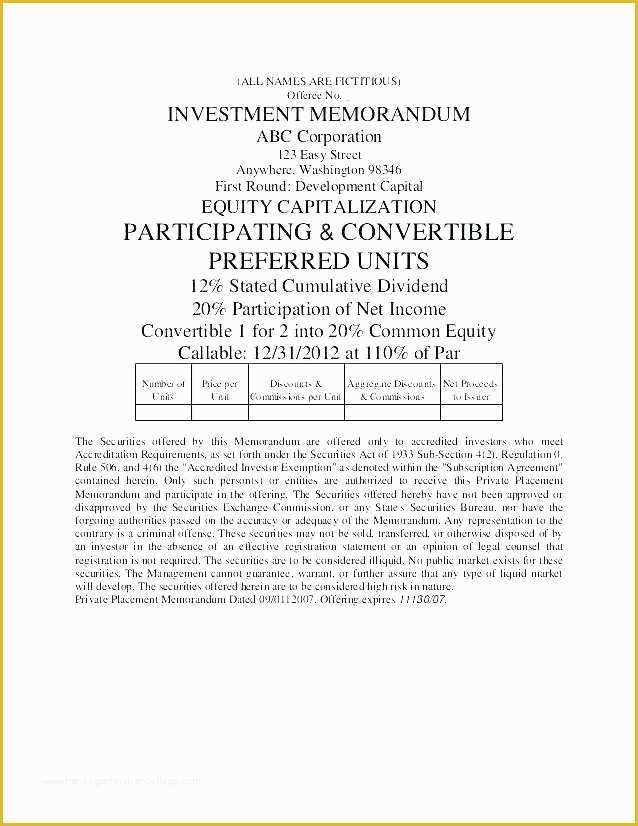
When I first discovered this, I was amazed by the amount of information that is not contained in an OM but is still technically disclosed.įor example, if the issuer is a trust (rather than a corporation or partnership, etc.), the OM might reference a declaration of trust or a trust indenture – documents that govern its mandate and management. Offering memoranda may refer to additional documents that prospective investors can receive upon request. #2: Offering memoranda may refer to other documentation Before making an investment decision, I will investigate the past performance of the markets and the firm’s management team, and I will search for ways to make reasonably accurate projections about the future.Īn offering memorandum contains information that the issuer may want you to know and must legally tell you, but that doesn’t mean that it should be the extent of your research. With that in mind, I use offering memoranda as only part of my due diligence. While an issuer may do its best to produce quality information, you should never assume that you know everything about the opportunity. It’s rare that everything goes perfectly according to plan in any business, although that risk can be accelerated if you’re investing in a fledgling firm.Īs such, no offering document – OM, prospectus or otherwise – will ever be complete. #1: Recognize that offering memoranda are never completeĪll investors should know that it is impossible to disclose everything about a business venture. Lack of awareness is one of the greatest risks associated with private investments. When they later discover unfavourable elements about the project, they often feel lied to and dismayed. They may grasp the concept in general (“I am investing in real estate”), but are unaware of the minutiae that can alter the outcome of a deal. Since investors can only rely on an OM to make their decision, the reality is that most retail buyers do not know what they’re investing in. To many, it’s just part of an investment package. Oftentimes they do no understand what an OM is or why they’re receiving it. Everyday investors do not have the experience or legal/financial/accounting training necessary to decipher 150+ pages of fine print. In practice, they are complex documents written by lawyers for regulators. In theory, OMs should provide investors with as much relevant information as possible. For example, she may want to know about the following before deciding to purchase: An investor cannot make a good decision without knowing all of the facts. Why disclosure mattersĭisclosure is an important concept in the investment world.

The issuer therefore produces an offering memorandum about the investment opportunity. Note: the entity in which investments are being solicited is called an “issuer,” because it is issuing securities. You’ll likely find it useful when researching opportunities from: This article identifies crucial elements of offering memoranda that every investor should be aware of.


An OM is a formal document that provides financial, operational and legal information about the business, along with the risks involved with investing. One of the ways for privately-held firms to meet these disclosure requirements is to issue an offering memorandum (OM). The rules vary per jurisdiction, but in general securities regulators want to ensure that prospective investors know enough about the business to make an informed decision. If a company wants to raise money from investors, it must first provide them with a certain amount of information about the venture.


 0 kommentar(er)
0 kommentar(er)
